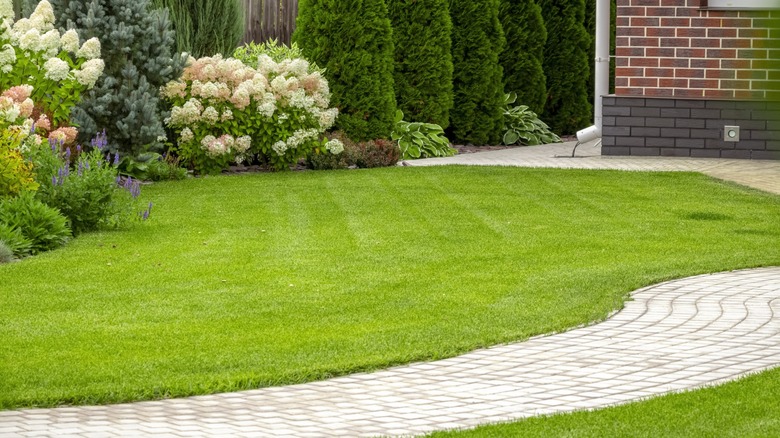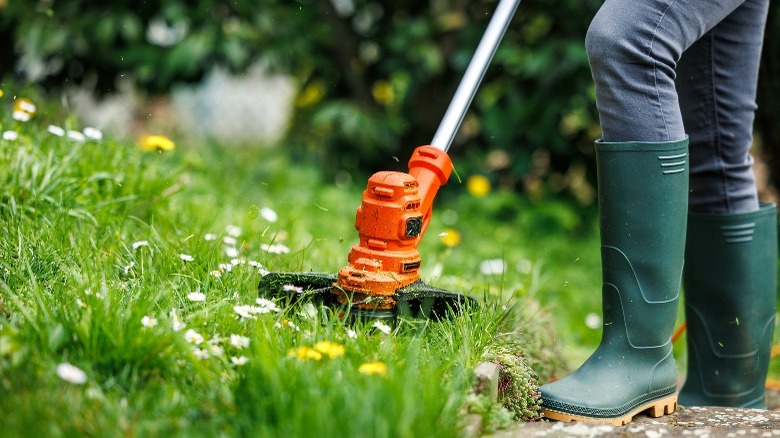The Counter-Clockwise Lawn Trimming Method That Saves You Time On Yard Work
Let's face it — there are some yard chores that you can't help but dread no matter what. For many people, weed eating is one of those tasks. String trimmers can be heavy and unwieldy, plus they tend to throw debris around seemingly at random. Thankfully, moving counter-clockwise as you use your weed whacker can speed up your weekly yard routine and support the health of your lawn and the environment. Use it together with other methods for mowing your lawn more efficiently to save time and control where your clippings land.
Why should you worry about where your clippings end up? Letting your grass fall wherever, such as on the sidewalk, driveway, or public street, is not ideal. Many local governments warn about the dangers of dumping yard waste into the local water supply. In fact, purposefully discarding it near storm drains is illegal in many areas due to the harm it causes to the environment. When you leave grass clippings on hard surfaces, they eventually flow into the watershed. As they decompose, excess nutrients can cause harmful algae blooms and deplete the oxygen supply in the water. Focusing on weed eating in one direction is not only eco-friendly by helping your yard waste stay in your lawn, but it's also convenient.
Trim in one direction to keep clippings on the lawn
Keeping your grass clippings in your yard and out of storm drains is easy with the counter-clockwise trimming method. A typical weed eater rotates in a counter-clockwise motion. If you move in the same direction as the rotation of the tool, your lawn trimmings fall to the left as you move along, allowing you to work more efficiently by saving time on clean up. This way, after you're finished weed whacking, you can quickly proceed to other tasks, like mowing, watering, and mulching flower beds.
However, this trimming method may not work perfectly all the time. Don't be annoyed if you see stray clippings on the driveway or in the road. Take a broom to sweep any debris back onto the grass where you can mow it down into a nutrient-rich soil addition to maintain a healthier lawn without chemicals. Use any collected grass clippings for your compost bin.

